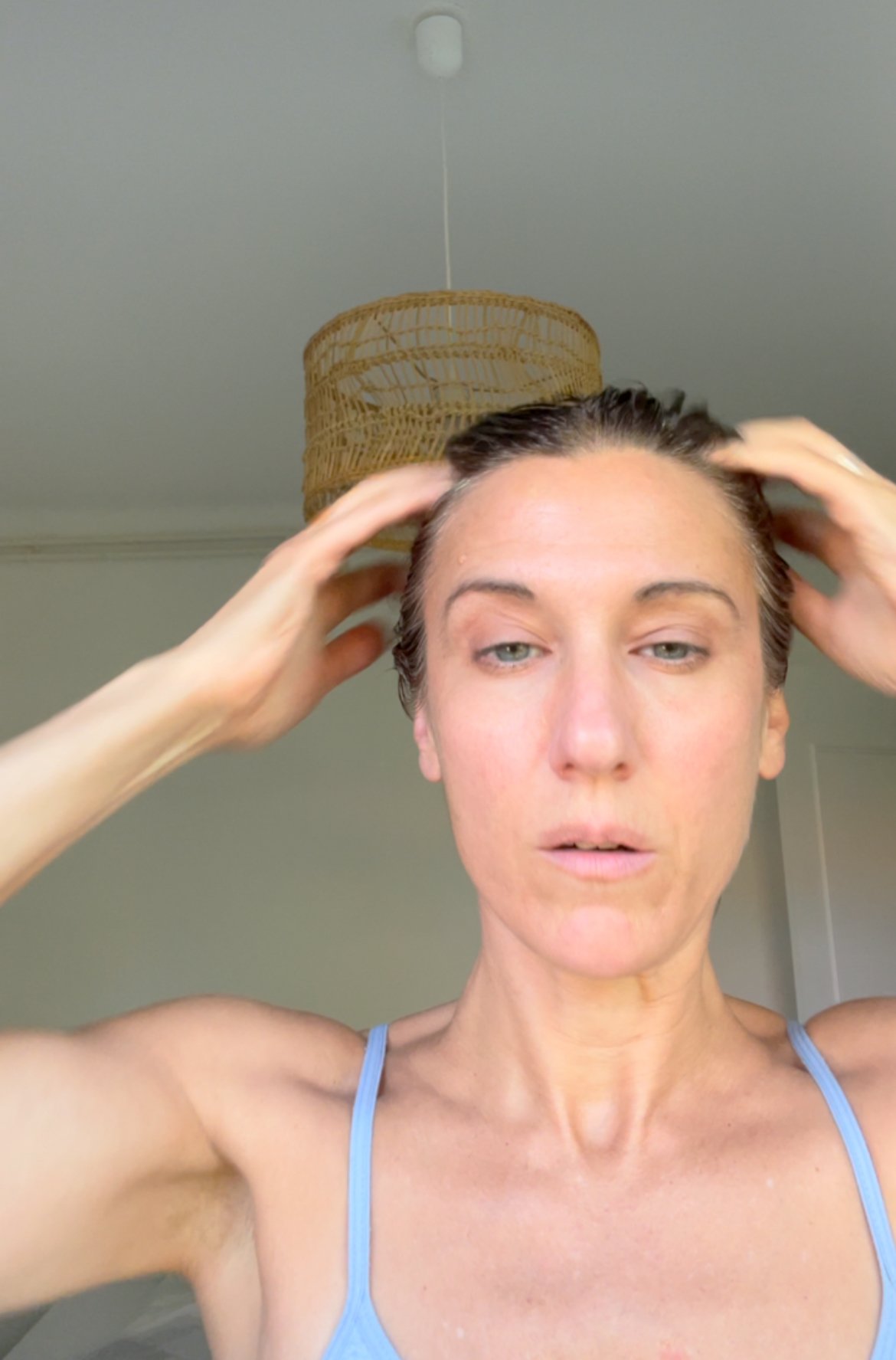DIY Herbal Scalp Massage Oil
Did you know that…
Scalp muscles are found deep to the skin of the scalp, face, and neck. By massaging the scalp, you are applying gentle, rhythmic pressure and movements to the scalp. Fat and fascia (a type of connective tissue that envelops muscle) live directly under the skin.
Scalp massage has various therapeutic and systemic effects, including benefits for the face:
Improved Circulation: Massaging the scalp stimulates blood flow to the scalp, face, and neck, delivering more oxygen and nutrients to these areas. This can enhance the health and appearance of your skin, promoting a natural glow.
Lymphatic Drainage: Encourages lymphatic drainage, which helps reduce facial puffiness and fluid retention. This detoxification process leads to clearer skin and a more defined facial contour.
Tension Release: Relieves tension in the fascia and underlying muscles, which can help prevent the overlying skin from becoming tight and wrinkled. This can reduce the appearance of saggy skin and wrinkles on the face.
Stress Reduction: The gentle, rhythmic pressure of a scalp massage can release endorphins, leading to a sense of relaxation and reducing stress-related skin issues like acne and inflammation.
Enhanced Flexibility and Range of Motion: By loosening tight fascia, scalp massage promotes flexibility and improves the range of motion, contributing to overall facial muscle health.
Improved Scalp Health: Increases nutrient delivery to hair follicles and promotes a healthy environment for hair growth, which can improve overall hair quality.
All results are visible with smoother and firmer skin on the face. Incorporating scalp massage into your routine not only benefits your hair and scalp but also enhances the health and appearance of your face, making it a holistic approach to beauty and wellness.
In this scalp massaging herbal infused oil, I have created this formula by carefully selecting medicinal herbs that enhance the benefits of scalp massage. The herbs included are known for their unique properties that support scalp health and relaxation:
Lavender: Lavender is renowned for its soothing and relaxing qualities. It not only calms the mind but also increases blood circulation, stimulates the growth of new skin cells, and promotes overall healing. Its gentle aroma provides a calming effect, making your scalp massage a truly relaxing experience.
Rose: Rose has exceptional healing properties that are both moisturizing and nourishing. It hydrates and softens the skin while stimulating and soothing wherever it is applied. The rich antioxidants in rose help protect the scalp and promote healthy hair growth.
Rosemary: Rosemary is a powerful stimulant for blood circulation, improving blood flow to the scalp and skin. This increased circulation brings more oxygen and nutrients to the hair follicles, promoting stronger and healthier hair growth. Additionally, rosemary's invigorating scent can help uplift your mood during the massage.
How to Make a Scalp Massage Oil:
Learn how to make a herbal infused oil: here. I provide two beginner methods in this blog post.
Select your own combination of herbs by learning more about each one, and how to choose the best carrier oils for the hair and scalp: here.
How to Make a Potent Herbal-Infused Oil:
The recipe for the powerful and potent herbal-infused oil I swear by can be found in my ebook: The Guide to Natural Bath + Body Care.
How to Use Scalp Massage Oil:
Prepare Your Hair:
Make sure your hair is dry or slightly damp. You can massage your scalp before or after washing your hair, depending on your preference.
Prepare the Oil:
Once you have the herbal infused oil, warm the oil slightly by placing the bottle in a bowl of preboiled water. Be careful not to overheat the oil.
Apply the Oil:
Dip your fingertips, pour, or spray and start applying the warmed oil into your scalp. Begin at the crown and work your way outwards in sections, ensuring the oil is evenly distributed.
Massage Techniques:
Kneading: Use your fingertips to apply gentle pressure in circular motions, kneading your scalp as you would with dough. This helps move fluid accumulation. If you apply more pressure, you’ll release tension.
Tapping: Lightly tap your scalp with your fingertips to stimulate blood flow.
Circular Motions: Move your fingertips in small, circular motions across your scalp.
Long Strokes: Use your fingers to make long, sweeping strokes from the front to the back of your scalp.
Focus on Pressure Points:
Pay special attention to areas where you feel tension. Use firm, circular motions on pressure points to release tension and improve blood flow.
Duration:
Continue massaging for at least 5-10 minutes. This will help the oil penetrate your scalp and provide maximum benefits.
Let the Oil Sit:
After massaging, let the oil sit on your scalp for at least 30 minutes to an hour. For deeper conditioning, you can leave it on overnight (lay a towel over your pillow to protect your pillowcase).
Rinse and Shampoo:
After the oil has been absorbed, rinse your hair thoroughly and shampoo as usual to remove any excess oil.
Frequency:
For best results, incorporate scalp massage with oil into your routine once or twice a week.

